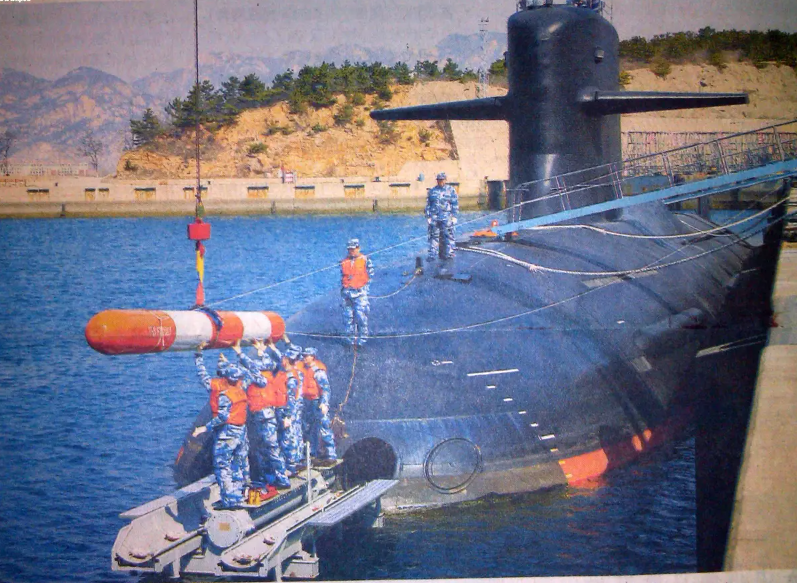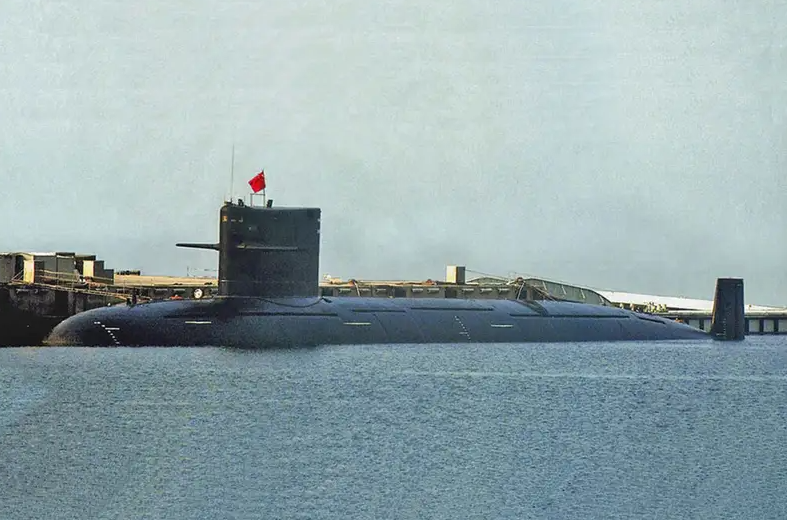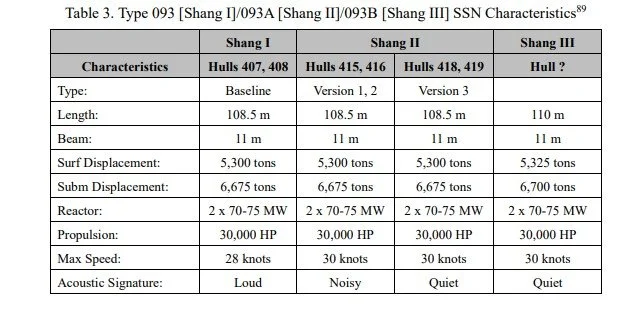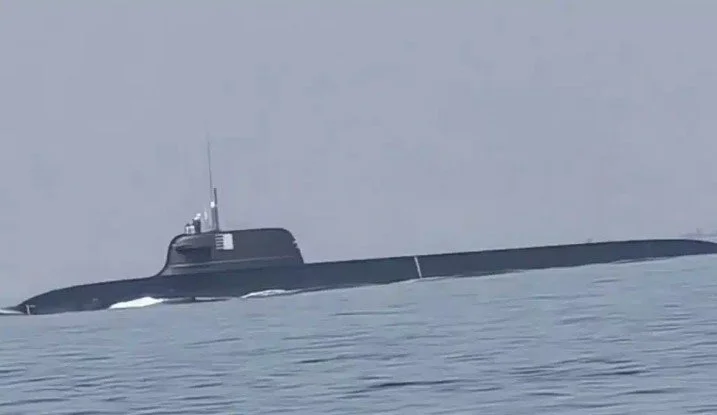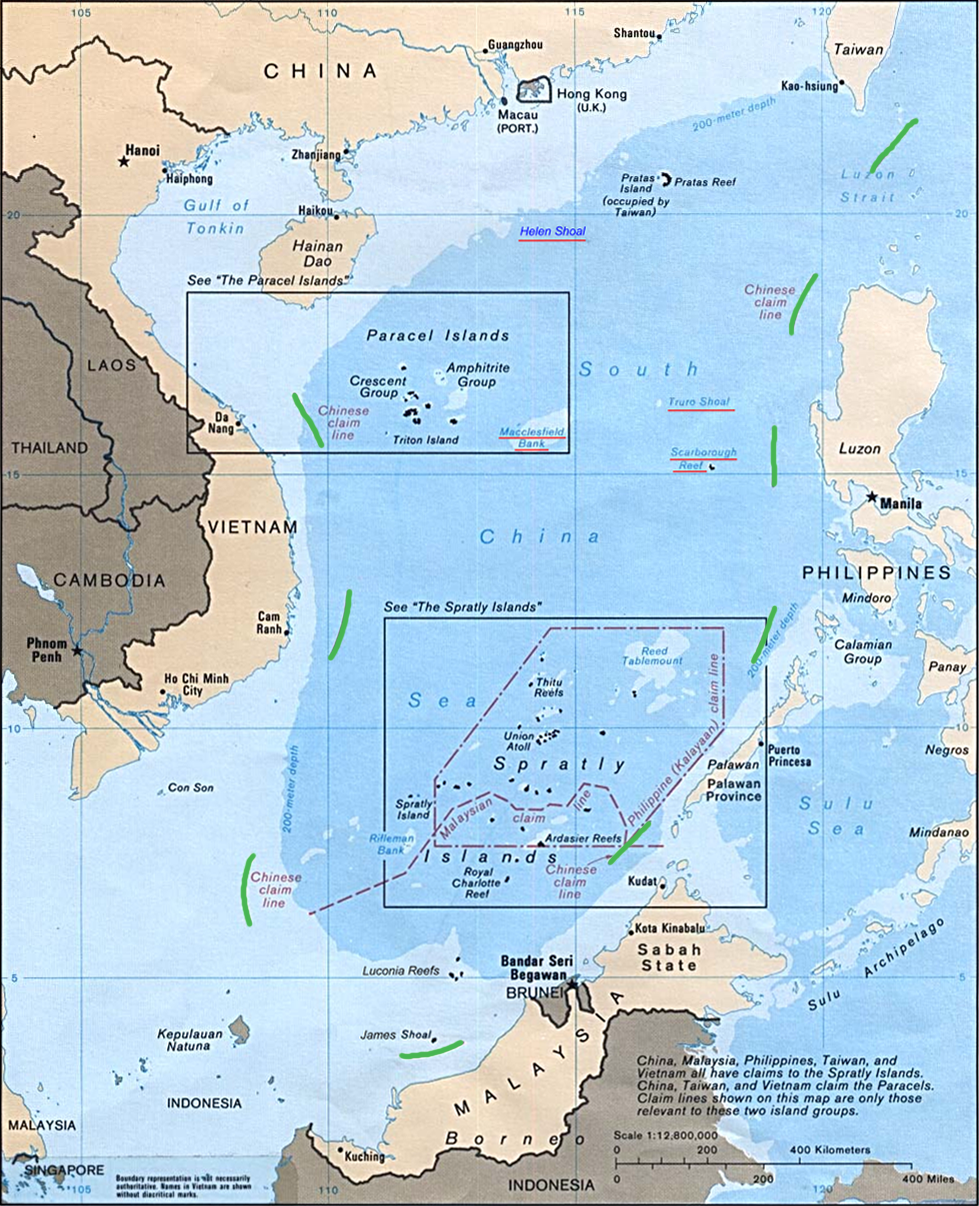Chinese Submarine Fleet -The Phantom Menace
Updated feb 2025
In every country, no other branch of the military is so shrouded in secrecy than the submarine service. Even in peacetime, missions are considered war patrol.
They are used for nuclear deterrence, intelligence gathering and covert operations.
NATO countries now have almost a century of experience in submarine operations.
Black boats are worth billions of dollars and are more complex machines than spaceships.
They are considered the tip of the spear of any naval force.
In my previous article about the PLAN, I focused on the Chinese surface fleet development and how it has been used to grow the influence and expand China’s territorial waters.
Over the past 20 years, China’s submarine fleet has been growing in capabilities and, although not yet comparable to the US Silent Service, is now recognised as a rising threat.
The very long march towards nuclear deterrence
Type 094 Jin class.
All Chinese nuclear submarines carry the designation "Changzheng", which means "Long March".
When China and the USSR still had a good relationship, the Chinese were given a few diesel attack submarines (Whiskey class) but, when Mao wanted to develop its nuclear deterrence force, Krutchev refused to give him access to Soviet nuclear technologies.
They had to contend with an old diesel submarine fitted with 2 short-range liquid-powered nuclear ballistic missiles of the Soviet Golf class.
Very quickly the Chinese understood that they had to master several key technologies before fielding a permanent deterrence force.
The first real Chinese SSBN was the Type 092 Xia.
Launched in in the early 80’s, it was equipped with 12 JL-1A solid propulsion SLBM.
But being extremely noisy and enduring problems with reliability and radiation leakage from its onboard nuclear reactor, it is reported to have only done one real patrol at the end of the 80’s and never sailed again. According to some reports, a second Xia was built, and was lost at sea in 1985.
The second generation was more successful.
6 SSBN Type 094 Jin have been built since 2004. They gave the Chinese a limited second strike capability with JL-2 medium-range SLBM.
But considered noisier than a 1970s Soviet Delta III/Projet 667BDR Kalmar , they never leave Chinese territorial waters preventing their missiles from potentially reaching the continental US.
The first SSBN of the next generation, the Type 096A is now in production. She is expected to be bigger to allow Russian sound-dampening construction techniques to be integrated. A new generation of ballistic missiles with real intercontinental ranges is being built for the new ship, thanks to hijacked US companies' contribution to the Chinese civilian satellite program.
Construction work is therefore on schedule to have the ships operational by 2030, as indicated in the Pentagon's annual reports on China's armed forces. The research also details potential breakthroughs in specific areas, including jet-pump propulsion and internal soundproofing devices, based on Russian technology. The ship is expected to be significantly larger than the Type 094, allowing it to incorporate "rafting" techniques mounted on complex rubber mounts to attenuate engine and other noise, as Russian designs do.
According to some experts, China did not get the 'crown jewels' of Russian shipbuilding, i.e. its latest technology, but would produce a submarine stealthy enough to compare with Moscow's upgraded Akula boats, which are already extremely quiet. Collin Koh, a Singapore-based defense expert, said the study opened a window on discrete research projects to improve China's SSBNs and bolster its anti-submarine warfare capabilities. "They know they are behind, so they are trying to catch up in terms of silence and propulsion," said Koh, from Singapore's S. Rajaratnam School of International Studies. Chinese strategists, like Russia, are very likely to keep their SSBNs in protective "bastions" under the cover of its surface fleet behind the great underwater wall, well protected from a potential invading fleet.
SSN Han a disappointing first generation
China's nuclear attack sub-program mirrors the SSBN program in its difficulties.
The first generation Type 091 Han, built between 1974 and 1990, was noisy and more dangerous to their crew than to their potential enemies.
She was followed by the Type 093 Shang class. USN ONI (Office of Naval Intelligence) listed the Type 093 as being noisier than Project 671RTM (NATO reporting name Victor III) which entered service in 1970. Only 2 Shang were built before a full redesign.
Chinese sailors loading a torpedo
Type 093 Shang
There are reports of Russian help during the construction of the follow-on units of the class Type 093A, making them the first Chinese nuclear attack subs with towed array sonar and hull vibration suppression techniques as well as a new vertical launch system. They are fitted with YJ-18 anti-ship missiles with a 400-kilometre range and a Mach 3 terminal sprint capability.
Their payload also includes modern long-range wire-guided wake-homing anti-ship torpedoes.
The U.S. Department of Defense estimates that in 2025 China will have 3-5 Type 093B Shang III guided-missile nuclear attack submarine (SSGN) operational. The Shang III is a the latest variant of the Shang class with improved anti-surface warfare capability and land-attack ability.
A SSGN version launching a volley of Mach 3 sea-skimming YJ-18, could test an Aegis cruiser to its limits, and give a very bad day to any carrier group if she can get close enough.
The next generation Type 095 attack nuclear submarine will adopt all the latest noise reduction measures. .
The Chinese submarine force today does not have enough modern nuclear attack sub to challenge the US Navy in the open seas. The 20+ Los Angeles, Virginia, and Seawolf class of the US Navy Pacific Fleet are at least a generation ahead of the Chinese boats.
But China can use them as very effective assets to secure the South China Sea.
Type 093B Shang III
A wall of classic submarines
The bulk of the Chinese submarine force is made of 40+ diesel subs. 30 of them are recent and have all been fitted with modern sonars and anechoic coatings.
The most capable units are the locally produced Yuan (17 units) and Russian-built Kilo (12 units delivered) . Both are considered very quiet and well-equipped with modern wake-following anti-ship torpedoes, anti-ship missiles and mines.
The Yuan class is also equipped with an air-independent propulsion system, based on the Stirling system. This gives subs the ability to stay submerged for more than 2 weeks at slow speed without the need to surface and recharge their batteries.
Stirling AIP module for submarine.
The older Ming class, a Chinese evolution of the old Russian Romeo class, are older boats but they could be used to great effect in laying up to 22 mines.
Blue-water navies have long discarded diesel subs for their poor projection capabilities, but many navies employ them for sea denial as they are still extremely capable weapons. The US Navy learned it the hard way when the Swedish submarine HMSM Gotland virtually sank the US Navy CVN Ronald Reagan in a fleet exercise in 2005.
The Chinese Bastion, the 9 lines.
Behind the Great Underwater Wall
During the Cold War, NATO built several underwater monitoring systems in the North Atlantic called SOSUS. They could detect Soviet submarines hundreds of miles away providing key intercept data for NATO submarines or long-range maritime patrol aircrafts. A similar system was built by the US and its allies around the South China Sea in the 2000, under the name “Fish Hook”.
This was not lost to China engineers who built a similar system in the South China Sea.
This system is called the Great Underwater Wall.
The Chinese Wall is reported to be able to monitor surface and submerged traffic up to the US base of Guam.
It is easy to imagine how decisive this system can be when used in conjunction with a fleet of very quiet submarines laying a network of remotely operated anti-ship or anti-submarine mines.
Such defensive systems can level the playing field and can impair US Navy submarines or surface fleet operations.
China have built a perfect 2 eyes Go game defensive set-up
It is not an exaggeration to think that China, after 20 years of submarine fleet’s expansion, is now in a position to secure the South China Sea against any regional foes.
Rocket-propelled anti-submarine mine
Submarine Fleet
North Sea Fleet:
1 SSK Romeo Type 033, 1 SSB Qin Type 032 (SLBM test)
2ème flottille (Qingdao) 6 SSK Song (Type-039)
12e flottille (Lushun) 8-10 SSP Yuan (Type-039B), 3-5 SSK Ming (Type-035)
2-3 ShangII (Type 09IIIA) SSN
1-2 ShangIII (Type 09IIIB) SSGN ( 2025)
East Sea Fleet:
22e flottille (Daxie Dao) 8-9 SSP Yuan (Type-039A/B)
42e flottille (Xiangshan) 6 SSK Kilo (Projet 636/Projet 877EKM)
3 SSK Song (Type-039)
South Sea Fleet:
72e flottille (Xiachuan Dao) 4 SSK Ming (Type-035) (+10 en reserve)
32e flottille (Yulin) 2 SSK Song (Type-039), 4 SSK Kilo (Projet 636M)
2-3 SSN ShangII (Type 09IIIA)
1-2 SSGN ShangIII (Type 09IIIB) (2025)



